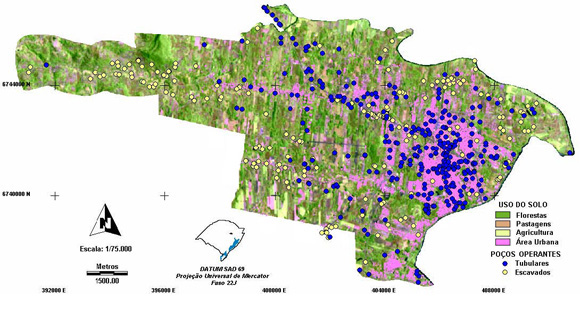Application of conditional probability and the Markov chain process in the analysis occurrence of dry and rainy periods in Garanhuns, Pernambuco, Brazil
Keywords:
occurrence, probabilistic models, Gamma distribution, Markov chain
Abstract
Agriculture presents dependence on the climatic conditions, especially on precipitation. This way, it is necessary to study the probabilities of occurrence of rain in Garanhuns municipality, Pernambuco State, especially due to its irregularity, to support farmer’s decisions about agriculture activities. The objectives of this study were to forecast monthly rainfall at different significance levels and to determine the probabilities of occurrence of dry and rainy periods for Garanhuns region, state of Pernambuco, Brazil. Monthly rainfall data from 1913 to 1987 were analyzed. The criteria to identify dry and rainy periods were based on four classes of monthly rainfall: (S) dry month, from 0 to 50 mm; (PC) low rain month, from 50 to 100 mm; (C) rainy month, from 100 to 200 mm and (BC) very rainy month, above 200 mm. Thus, the monthly averages were analyzed according to the four classes of rains to estimate the probable occurrence of rain following Robertson (1976). The Gamma probability distribution was also used to forecast monthly precipitation, at the following levels: 90, 80, 75, 70, 60, 50, 40 and 30% of probability. The Gamma distribution adjusted well to the data of Garanhuns region, making possible the estimation of the probable rainfall amounts for each month of the year, at different levels of probability. Rainy season was the period between May and August, and the dry one between October and December. The lowest probable monthly rainfalls, below 50 mm, were observed between October and December, when irrigation is required for food production, being recommended to plant annual crops and cultivars of short cycle to be sowing in October, and of long cycle to be sowing in April, in order to reduce the risks of damage.
Published
23/04/2009
Issue
Section
Papers
Authors maintain the copyrights for their work. However, they grant rights of first publication to Ambiente e Agua - An Interdisciplinary Journal of Applied Science. In compensation, the journal can transfer the copyrights, allowing non-commercial use of the article including the right of sending the article to other data bases or publication media. The journal uses the CC BY 4.0 license"






